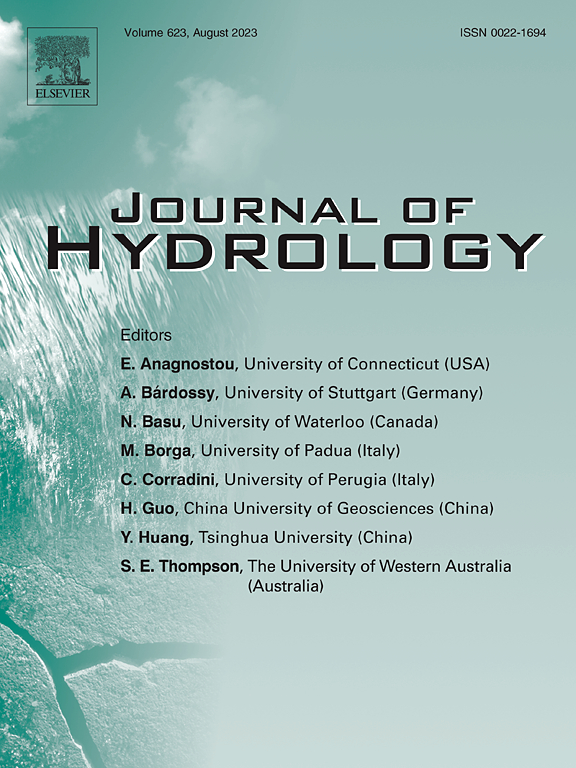旱涝突变研究进展综述
IF 5.9
1区 地球科学
Q1 ENGINEERING, CIVIL
引用次数: 0
摘要
旱涝突变事件以旱涝条件的快速变化为特征,对人类社会和生态系统的影响日益加剧,受到越来越多的关注。本文系统地总结了DFAA事件的定义、鉴定、表征、归因、影响和未来预测方面的最新进展,以及当前的挑战和未来的研究前景。尽管自2000年以来与洪水有关的灾害显著增加,加上干旱频率显著上升,但DFAA的统一定义仍然难以捉摸。我们探讨了气象、水文和农业DFAA指数,强调了基于阈值的方法和指标方法的局限性。人为气候变化与自然气候变率之间的协同相互作用加剧了DFAA事件。人为气候变化导致大气水汽每摄氏度增加~ 7%。气候预测表明,DFAA的频率可能会增加,全球变暖预计会增加DFAA的风险,对贫困人口的影响尤为严重。该综述强调了DFAA对作物产量和生态系统的有害影响,增加了土壤侵蚀和野火风险。未来的研究应从标准化方法、数据集集成、不确定性分析和非平稳拟合等方面着手,完善DFAA的影响评估和风险管理。本文章由计算机程序翻译,如有差异,请以英文原文为准。
A comprehensive review of recent progress on the drought-flood abrupt alternation
Drought-flood abrupt alternation (DFAA) events, characterized by rapid shifts between drought and flood conditions, are receiving increased attention due to their exacerbated impacts on human societies and ecosystems. This review systematically summarizes recent advances in the definitions, identifications, characterizations, attributions, effects, and future projections of DFAA events, along with current challenges and future research perspectives. Despite a significant increase in flood-related disasters since 2000, compounded by a notable rise in drought frequency, a unified definition of DFAA remains elusive. We explore meteorological, hydrological, and agricultural DFAA indices, highlighting limitations of threshold-based methods and indicator approaches. The synergistic interaction between anthropogenic climate change, driving a ∼7 % increase in atmospheric water vapor per degree Celsius, and natural climate variability exacerbates DFAA events. Climate projections indicate a potential increase in DFAA frequency, with global warming projected to raise the risk of DFAA, disproportionately affecting poorer populations. The review underscores the detrimental impacts of DFAA on crop yields and ecosystems, increasing soil erosion and wildfire risks. Future research should focus on standardized methodologies, integrated datasets, uncertainty analyses, and non-stationary fitting to improve the impact assessment and risk management of DFAA.
求助全文
通过发布文献求助,成功后即可免费获取论文全文。
去求助
来源期刊

Journal of Hydrology
地学-地球科学综合
CiteScore
11.00
自引率
12.50%
发文量
1309
审稿时长
7.5 months
期刊介绍:
The Journal of Hydrology publishes original research papers and comprehensive reviews in all the subfields of the hydrological sciences including water based management and policy issues that impact on economics and society. These comprise, but are not limited to the physical, chemical, biogeochemical, stochastic and systems aspects of surface and groundwater hydrology, hydrometeorology and hydrogeology. Relevant topics incorporating the insights and methodologies of disciplines such as climatology, water resource systems, hydraulics, agrohydrology, geomorphology, soil science, instrumentation and remote sensing, civil and environmental engineering are included. Social science perspectives on hydrological problems such as resource and ecological economics, environmental sociology, psychology and behavioural science, management and policy analysis are also invited. Multi-and interdisciplinary analyses of hydrological problems are within scope. The science published in the Journal of Hydrology is relevant to catchment scales rather than exclusively to a local scale or site.
 求助内容:
求助内容: 应助结果提醒方式:
应助结果提醒方式:


